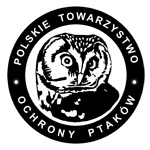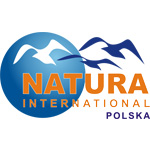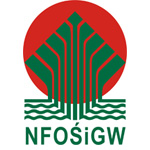About the Project
Project title: Active protection of great snipe Gallinago media in Dolina Górnej Narwi Natura 2000 site
Project number: LIFE11 NAT/PL/436
Project period: 03.09.2012-31.08.2016
Total project budget: 2 113 851 euro
Coordinating Beneficiary:

Polish Society for Bird Protection
Associated Beneficiary:

Natura International Polska
http://www.natura-international.org.pl
Co-financiers:

The Financial Instrument for the Environment LIFE +
http://ec.europa.eu/environment/life/index.htm

National Fund for Environmental Protection and Water Management
A new LIFE+ project has launched

The project on active conservation of the great snipe in the Upper Narew River Valley carried out by PTOP in partnership with Natura International Polska foundation kicked off beginning of September. The enterprise is co-supported by the European Union as part of the EU funding tool for the environment Life+ and Polish National Fund for Environmental Protection and Water Management. The total cost of the project is ca. 2.1 million euro, and the duration – 4 years.
The great snipe is a migratory bird species belonging to the sandpiper family. It inhabits Central and Eastern Europe, from the Scandinavian Peninsula and Poland through the Yenisei River. Due to its masking colouring it is very difficult to spot while it forages or rests. It lives in inaccessible areas – vast stretches of vast fens and mires. It leks in the night, making it difficult to observe and study; what is more, it is a very rare species (in 2007, in the Upper Narew River Valley only ca. 90 males were counted). Therefore, although so captivating, the great snipe remains completely unknown to most people.
The most spectacular aspect of great snipes is their lekking. In the evenings, males form small groups. They stick out their breasts and arch their legs to impress the females. While doing this, they produce characteristic sounds. In the final phase of the lekking, the birds throw their wings up, crouch down, and spread their tails. In the same time, females observe the lekking arena and select the most attractive partner. The birds are extremely attached to their lekking site. Some sites have been visited systematically over the period of 20, and even 60 years.
 Great snipes need vast, flooded, open areas, which are becoming scarce in our landscape. Until recently, local farmers sustained extensive agriculture based on meadows and pastures, which was favourable for wading birds. Along with the decline of scything and nearly complete disappearance of cattle pasturage meadows started to become overgrown with reeds and thickets. One of the project’s aims was to recreate 230 ha of open meadow areas. To that purpose, we plan to purchase 160 ha – current or potential habitat sites for the great snipe. Another 70 ha assigned for restoration belongs to PTOP. Meadows will be restored for use through removal of thickets and preliminary scything. It will be of particular importance to eliminate reeds. Restored areas will be further used as part of agricultural-environmental programmes. Thanks to the restorations and the construction of fords with access roads it will become easier to reach the meadows by farming vehicles and to dispose of excess biomass.
Great snipes need vast, flooded, open areas, which are becoming scarce in our landscape. Until recently, local farmers sustained extensive agriculture based on meadows and pastures, which was favourable for wading birds. Along with the decline of scything and nearly complete disappearance of cattle pasturage meadows started to become overgrown with reeds and thickets. One of the project’s aims was to recreate 230 ha of open meadow areas. To that purpose, we plan to purchase 160 ha – current or potential habitat sites for the great snipe. Another 70 ha assigned for restoration belongs to PTOP. Meadows will be restored for use through removal of thickets and preliminary scything. It will be of particular importance to eliminate reeds. Restored areas will be further used as part of agricultural-environmental programmes. Thanks to the restorations and the construction of fords with access roads it will become easier to reach the meadows by farming vehicles and to dispose of excess biomass.
Apart from the overgrowing of the Valley, one of the key causes of the decline of charadriiform birds is the lowering of unconfined groundwaters. It will become possible to improve humidity conditions in purchased sites through the construction of valves.
Another element of the project is limiting of the pressure imposed by tourists on one of the lekking sites, as its locality is widely known and attracts numerous birdwatchers. Construction of an observation deck will allow streamlining of the tourist traffic and reduce uncontrolled penetration of the lekking site and its surroundings, while making it possible in the same time to admire great snipes during lekking without startling them.
 National Program of Great Snipe Conservation will contribute to the species’ protection at the scale of entire Poland. The document will be developed based on data concerning the entire Polish population and on the results of investigations on the great snipe, which will be continued as part of the project. Outreach and educational activities addressed primarily to local communities will additionally support effective conservation of the great snipe and other birds associated with extensively used meadows.
National Program of Great Snipe Conservation will contribute to the species’ protection at the scale of entire Poland. The document will be developed based on data concerning the entire Polish population and on the results of investigations on the great snipe, which will be continued as part of the project. Outreach and educational activities addressed primarily to local communities will additionally support effective conservation of the great snipe and other birds associated with extensively used meadows.
Conservation of the great snipe is not only conservation of a species interesting for naturalists and scientific researchers, it is also a struggle to bring back other bird species characteristic for the Narew River valley – black-tailed godwits, common redshanks, and lapwings, which used to testify of the exceptional natural richness of this area. So far, following traditional farming, they retreat from the valley which becomes overgrown with reed.